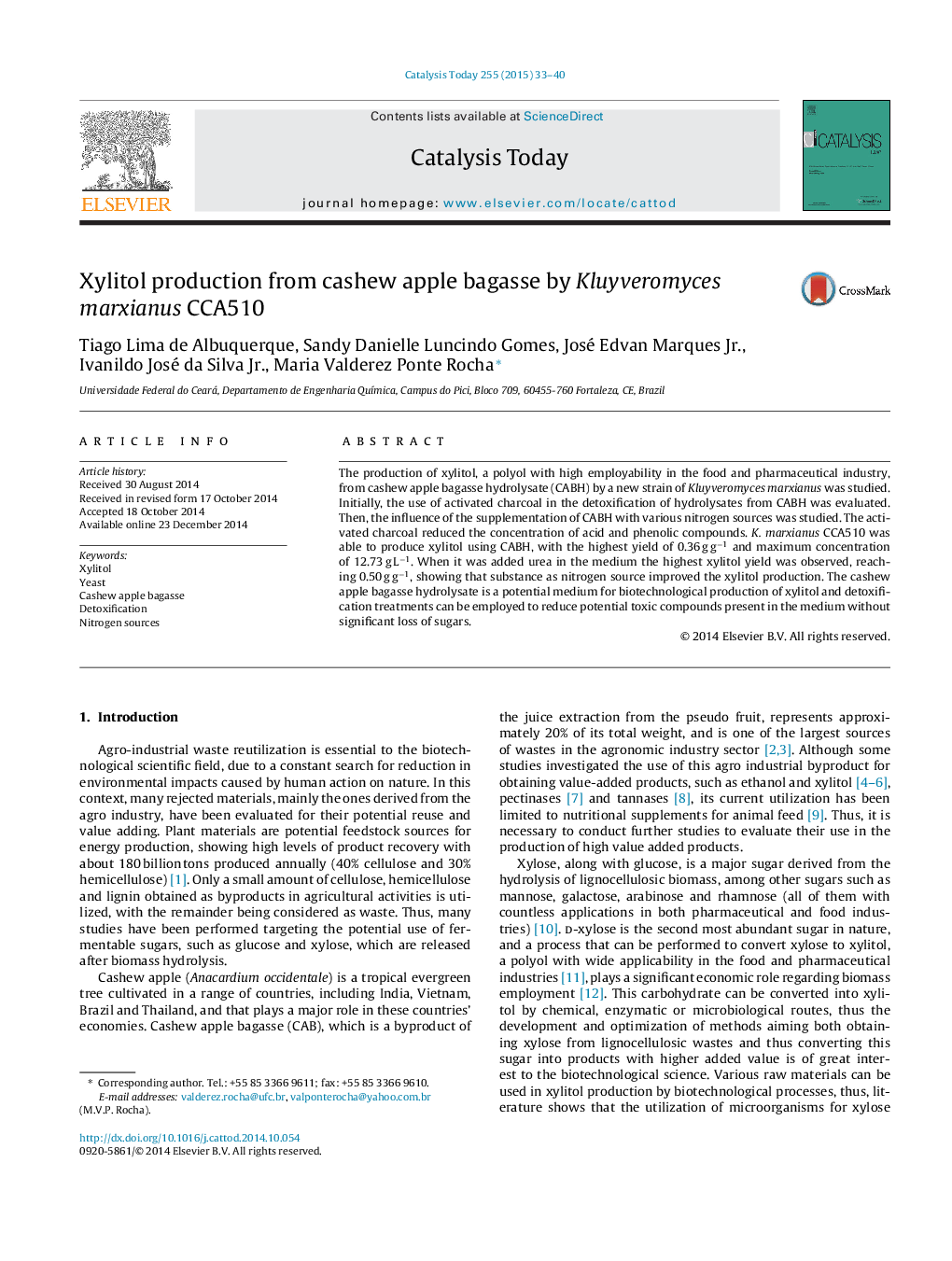| Article ID | Journal | Published Year | Pages | File Type |
|---|---|---|---|---|
| 53764 | Catalysis Today | 2015 | 8 Pages |
•Cashew apple bagasse hemicellulosic hydrolysate was used for xylitol production.•Xylose was obtained from cashew apple bagasse treated with 0.6 mol L−1 H2SO4 at 121 °C.•Detoxification treatment with activated charcoal was more efficient.•Xylitol production did not influence by the initial inhibitors concentrations.•Kluyveromyces marxianus CCA510 was able to produce xylitol.
The production of xylitol, a polyol with high employability in the food and pharmaceutical industry, from cashew apple bagasse hydrolysate (CABH) by a new strain of Kluyveromyces marxianus was studied. Initially, the use of activated charcoal in the detoxification of hydrolysates from CABH was evaluated. Then, the influence of the supplementation of CABH with various nitrogen sources was studied. The activated charcoal reduced the concentration of acid and phenolic compounds. K. marxianus CCA510 was able to produce xylitol using CABH, with the highest yield of 0.36 g g−1 and maximum concentration of 12.73 g L−1. When it was added urea in the medium the highest xylitol yield was observed, reaching 0.50 g g−1, showing that substance as nitrogen source improved the xylitol production. The cashew apple bagasse hydrolysate is a potential medium for biotechnological production of xylitol and detoxification treatments can be employed to reduce potential toxic compounds present in the medium without significant loss of sugars.
Graphical abstractFigure optionsDownload full-size imageDownload high-quality image (138 K)Download as PowerPoint slide
